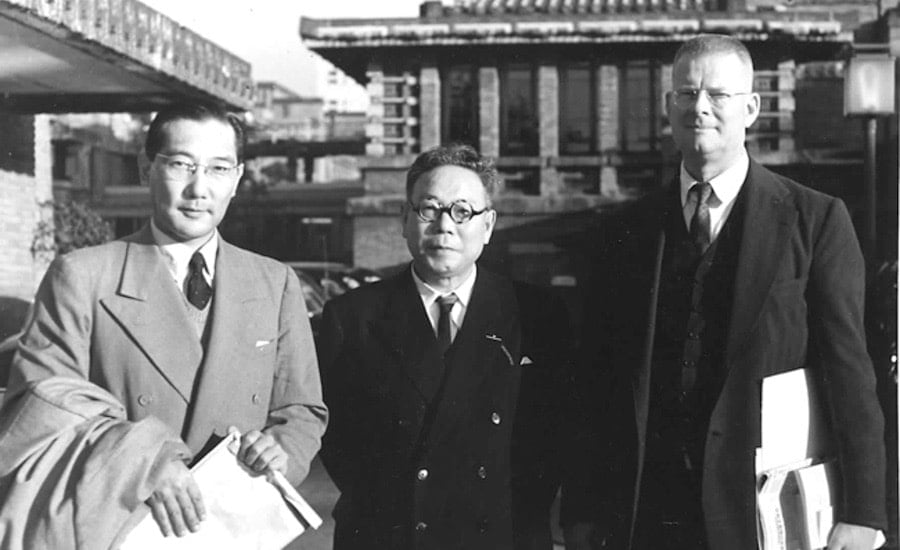Like most great things, Kaizen wasn’t ‘invented’ by one single person. It was developed over the last century from a simple word to a powerful practical philosophy that can be used to get whatever you want from life.
Here’s a brief history of where kaizen came from.
Kaizen is just a word that means ‘improvement.’
Kaizen is just a Japanese word (改善) that means ‘improvement’ or ‘change for the better.’ Over the years, it has come to mean striving for continuous improvement.
The earliest form of Kaizen came from the United States.
In the 1930s, an American statistician and engineer called Walter Shewhart created the ‘Shewhart Cycle’ while working for Bell Labs.
This system is now most commonly known as the PDCA Cycle; Plan, Do, Check, Act. It’s the direct ancestor of kaizen in business, and the process is pretty self-explanatory. You make a plan, carry it out, analyze the results to see what could have been better, and then act on those insights to improve. Simple.

Later, in the 1940s, Edward Deming adapted it and focused on creating better systems and better quality, rather than cost-cutting. More crucially, he determined that management caused 85% of all problems and insisted on putting the onus of development on those carrying out the work on the shop floor.
In the 1950s, Japanese business managers took on the idea and developed it further.
The PDCA cycle — along with many other processes — made its way to Japan after the second world war. Deming’s ideas were far more popular in Japan than they were in the USA, and his ideas were seized by Japanese managers and spun into the kaizen philosophy that we know today.
 The most notable of these was Taiichi Ohno, an industrial engineer working at Toyota. He developed the famous Toyota Production System up until the mid-1960s.
The most notable of these was Taiichi Ohno, an industrial engineer working at Toyota. He developed the famous Toyota Production System up until the mid-1960s.
Ohno’s Ten Commandments have a powerful influence on modern kaizen:
- Seek to eliminate waste, and recognize that you are a cost.
- Say “I can do it” and try hard.
- The workplace is your teacher. You can only find your answers there.
- If you’re going to do anything, do it right away. The only way to win is to start now.
- Once you start something, never give up. Persevere until it’s finished.
- Explain complicated concepts simply. If an idea is simple to understand, repeat it.
- Bring your problems out into the open.
- Realize that actions without value are bad.
- Keep improving productivity and improving what has already been improved.
- Practice and share wisdom, don’t just hoard it. The power of kaizen has helped Toyota to become a world leader in innovation and manufacturing — as well as a hefty market cap.
NBC made a documentary and saved Ford
From the 1970s, Japan was an economic powerhouse with the world’s second-largest GDP. Everybody was looking at the Japanese as innovation leaders.
In 1980, NBC made a documentary called, If Japan Can, Why Can’t We? and introduced Deming’s ideas to millions of Americans. Here it is:
Executives at Ford must have seen the documentary because a year later, they hired Deming to turn the company around and prevent $1 billion in losses every year.
By 1987, he’d saved the company, and Ronald Reagan had awarded him the National Medal of Technology.
Kaizen came back to the West in the mid-80s
In 1986, a management consultant called Masaaki Imai penned the best-selling book: Kaizen – The Key to Japan’s Competitive Success and founded the Kaizen Institute. His concept revolved around incremental growth and process improvement.
He also notes how the results-orientated mindset of much of the West’s factories resulted in worse results than the process-orientated Japanese companies. His and Deming’s ideas were developed in the last 30 years into the concepts of Lean Manufacturing and Six Sigma that are widely used in manufacturing today.
Robert Maurer brings these ideas into the personal development world in ‘The Kaizen Way.’
The earliest I can find kaizen ideas applied to the world of self-development is Dr. Robert Maurer’s The Kaizen Way.
In it, Robert explains that the reason that most people fail is that,
“All changes are scary, even positive ones. Attempts to reach goals through radical or revolutionary means often fail because they heighten fear. But the small steps of kaizen disarm the brain’s fear response, stimulating rational thought and creative play.”
He breaks it down into six ideas:
- Taking small actions.
- Asking small questions.
- Thinking small thoughts.
- Solving small problems.
- Bestowing small rewards (to yourself or others).
- Recognizing small but crucial moments others ignore.
These are simple ideas that I find beautiful. Perhaps surprisingly, I haven’t read this book yet. I came across this concept of incremental improvement through other ways, but it’s had a powerful impact on my life nonetheless.
Kaizen-Ben launches in 2018 and does nothing for two years.
I aim to popularize this thinking and add my own spin to it to help you make the life changes you’ve always wanted.
I knew there was something powerful here to share with people. And I wanted to share my journey.
However, I didn’t truly understand what it was going to take. And I wasn’t ready for what would happen next. But it taught me what I needed to know to take this step now, so buying the domain wasn’t a total waste.
Today, you read this blog.
What step will you take next? I hope you learned something useful in this blog, and it’s piqued your interest enough to explore the idea of what kaizen is and how you can use these ideas to improve your life.
For some more quick inspiration, check out these quotes about kaizen and continuous improvement.
Or you can sign up to receive my Mote Note every day free.
